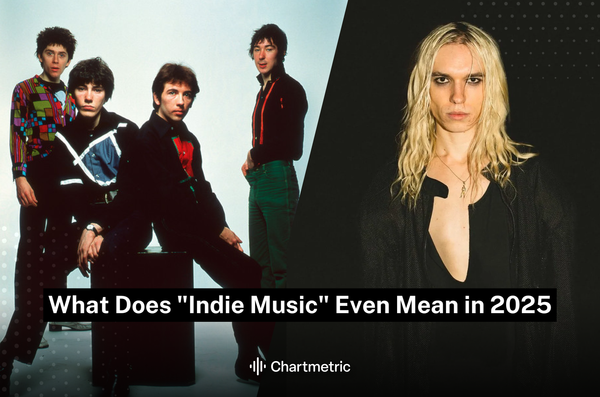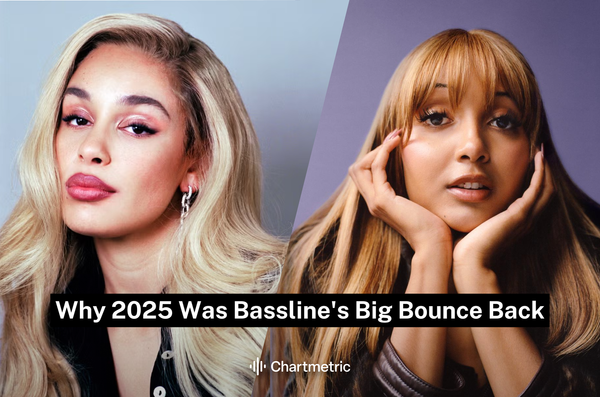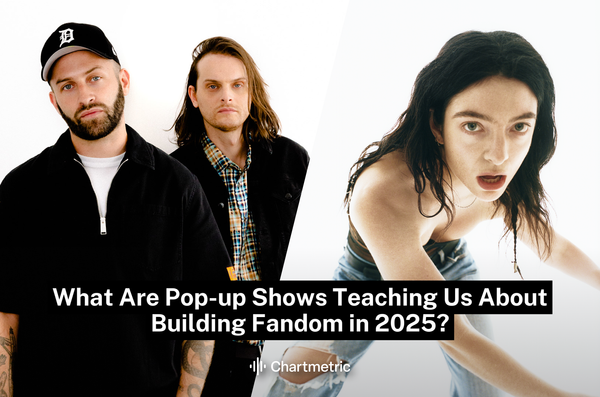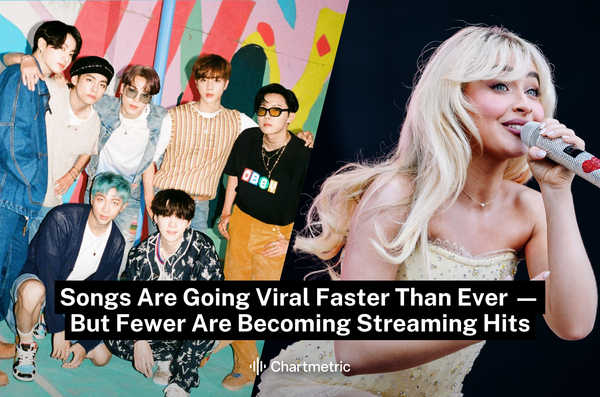On January 28th, 1977, the English punk rock band Buzzcocks came out with their first release, an EP called Spiral Scratch. For all of the punk bands milling around the UK at the time, this record release was unique in that it was fully independent — on the band’s own label, New Hormones. After borrowing a collective £500 from family and friends, the group pressed 1,000 copies to cover the cost of the loan — and ended up selling another 15,000 more.
Spiral Scratch also landed itself in the Top 40, making it the first ever record in music industry history to reach peak popularity as an indie self-released work. A wave of small British independent labels followed. This was significant in terms of distribution — prior to the establishment of indie labels, it was impossible for artists to land their music in record shops without being signed.
The Buzzcocks broke the barrier by becoming the true definition of indie artists, embodying the DIY mindset by forming their own means of distribution and proving to other musicians that as long as the music was good enough, you really could do everything on your own. This served to solidify the traditional definition of an indie artist — meaning an artist producing music independently from a commercial label.
It could be said that Buzzcocks were the originators of “indie music” — in the sense of a DIY, underground, low-budget approach to music creation and distribution. The origins of “indie music” as a sound may be harder to pin down, describes music journalist, NYU professor, and co-host of podcast Switched on Pop Charlie Harding.
“In a lot of ways, “indie” [as a sound] is as vague as “pop”,” he told Chartmetric. “But the 2000s was when indie really flourished. There was a very strong bubblegum pop sound, and simultaneously the industry was suing college students for downloading things on Napster. So indie was a posture against all of that.”
Indie as a genre also paved the way for many experimental sounds for the time that we might consider more mainstream today. “Indie sleaze” was coined in the 2020s to describe bands like The Strokes, LCD Soundsystem, Arctic Monkeys and The Libertines — indie rock bands that took creative risks and pushed new styles to the forefront.
As this time of flourishing for the indie genre also revealed, indie as a sound and indie as a creative philosophy can mean very different things, or at least not be in complete overlap.
“A band like Vampire Weekend is a great example, in that it seems to represent the ethos and geography and set of people around the indie scene of Brooklyn in the 2000s. But they’re on Columbia,” described Harding.
What does Indie mean today?
In the digital age, the shiny novelty of independence has worn off to some extent for “indie” artists — signed or unsigned to an indie label. Artists of all levels are more responsible than ever for their digital presence on social media and streaming platforms. They are working from home studios with high quality equipment. And they are increasingly retaining rights, creative control, and shaping their career into a mold that suits them and their team.
“The distinction of independence doesn’t have the same cultural weight that it did two decades ago,” described Harding. “Now it’s like, what brand deals do you have? Who are you collaborating with? How are you making your thing work?”
While the physicality of DIY in indie music culture certainly still exists in the community label space — like artists pressing their own records and making their own merch — it does seem that the “indie ethos” most relevant to artists these days is the DIY career-builder mindset in digital spaces, like making communities online through Discord and Substack, and constructing a unique media presence to connect to fans.
In this sense of “indie”, self-made artists at any tier of popularity could be considered as such.
As indicated by this breakdown of the Top 1000 artists by Chartmetric Score in 2024, indie artists accounted for 41%, compared to 59% of artists signed to majors — not so far off from half and half. For independent artists, this number is up 13% from just five years ago.
The ability of artists to become their own small media organization and gain traction independently before signing any deals ideally gives them leverage, which is important and necessary in such a competitive space. At the same time, the very fact that everyone has a chance at this leverage makes the competition even tougher.
The seemingly endless opportunities available in the digital space — as well as the resulting deconstruction and rebuilding of traditional deal structures — has also blurred the lines when it comes to what makes an “indie artist”.
“This is pure speculation, but maybe the idea of independence is aesthetically more important than your record label status,” Harding theorized. “Are you seen as somebody whose social media is authentic? Someone like Charli xcx — independent, strong, guiding her career. Or Remi Wolf — she gives off a feeling of unbridled creativity. I suspect the music business is working hard to put their thumb on her approach.”
Indie and decentralization
As market decentralization has progressed and the industry has become increasingly fragmented through customized content and niche communities, this has also incidentally established fertile ground for a new indie ecosystem.
In part because of departed attention from the monoculture, many artists have been able to grow sustainable fan bases of one or two million people — small potatoes in the grand scheme of things, but potentially enough for a small artist to make a living amongst a community of dedicated fans.
How much press an artist receives doesn’t always directly relate to the size of their audience, either. Take 2hollis, who after the release of his album star this April has seen an explosion in followers on Spotify. Compared to an artist like Mk.gee — whose 2024 album Two Star & The Dream Police arguably had a larger traditional music press presence and acclaim from influencers like Margeaux Labat — 2hollis didn’t get quite as much widespread attention. And yet, his Spotify monthly listeners have now exceeded that of Mk.gee’s, and his followers trail behind Mk.gee’s by just around 100.
Part of 2hollis’s strength is his identifiable image. His unmistakable long blonde hair, as well as small details like earrings inspired by Howl’s Moving Castle and associations with Skrillex and Drain Gang make for a strong digital presence.
“The independent game is stronger than ever,” describes Don Cannon, former VP of Def Jam and co-founder of label Generation Now. “Artists are moving smarter —they’re building real businesses, leveraging tech and tapping into major opportunities without losing their freedom. Independence isn’t just an option anymore — it’s the blueprint.”
The indie squeeze
As of 2025, over 50% of music consumed on major platforms came from unsigned artists. And in 2024, indie artists made up 35% of global recorded music revenues, totaling $127 billion.
But at the same time that there is growth and promise for independent artists, there are economic pressures. Rising costs in manufacturing, tariffs, visas, reduced fan spending, travel expenses, as well as streaming demonetization are making it more difficult for indie artists to make a living from their art.
With monetization so low, many indie artists are fully opting out of streaming culture as well — with artists like Deer Hoof, King Gizzard & The Lizard Wizard, and Xiu Xiu being some of the latest musicians to take their music off of Spotify — both in protest of low returns and Spotify CEO Daniel Ek investing €600 million in AI military defense company Helsing.
Who holds the power?
At the same time, however, indie artists have a super power that larger operations like majors may find more challenging to grasp — that is, their potential for connection to their fan communities. The strength of an artist’s online fan community has quickly developed itself as one of the most important factors driving sustainable artist careers in the internet age. And through meaningful personal engagement, indie artists have the ability to look after their fans like larger artists can’t.
Smaller, mid-level artists are also seeing a far larger percentage of growth than artists on majors. According to a sample of mid-level artists with 1) a Chartmetric rank between 12k and 35k and 2) who grew by at least 20% in 2024, over 90% of those artists were indie artists, compared to under 10% from major labels.
Artists on majors are likely to see fairly less growth if they are already established, compared to upcoming indies. This difference in percentage, however, seems fairly staggering, and could suggest some degree of stagnation among major artists (after all, Taylor Swift is growing, despite being huge already. Why not other major artists?)
At the end of the day, upcoming and established artists are coming up against some of the same promotional problems, such as grappling with the algorithm. Could it be that indie artists have the competitive edge in this respect — in regards to their potential to connect to fan communities?
Of course, “indie” is not a synonym for “resourceless.” Every artist needs a team to get them there.
As Nick Raphael formerly of Capitol Records UK described in an interview: “concentric circles of belief” are what makes an artist go from unknown to known.
“There’s an incredible moment of music happening where the middle section is getting bigger and bigger,” noted Raphael. “[And] you need a team of believers. The more people on your side, the more chance you have of being successful.”
“Maybe we’re heading towards the indie utopia,” Harding also described to Chartmetric. “I mean, I wish people got paid better. But I think the term “indie scene” is essential. Because it’s a set of relationships. The audience, the fandoms, the critics, and the musicians themselves. And the only thing that seems to work is the direct relationship to the fan, and that connection. No matter what size you are — if you’re the biggest artist in the world today — you have to have that relationship.”






